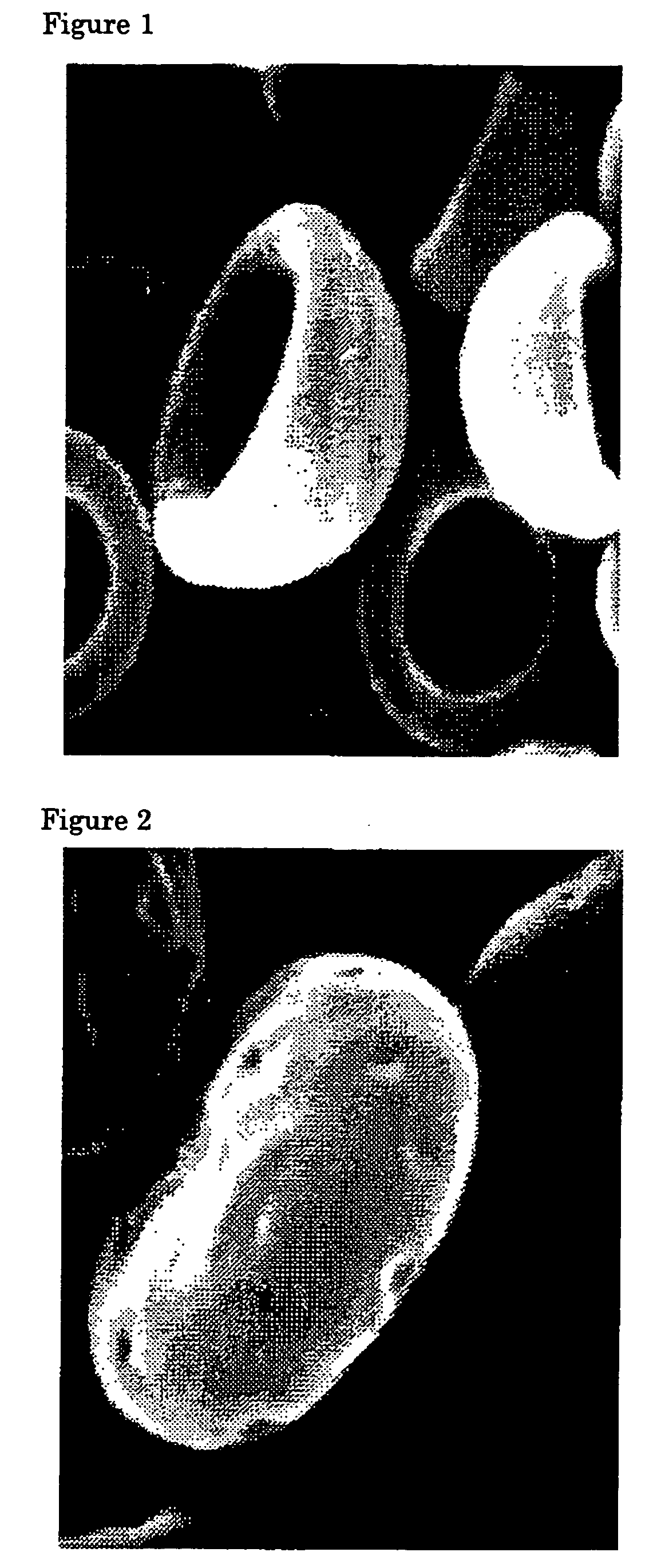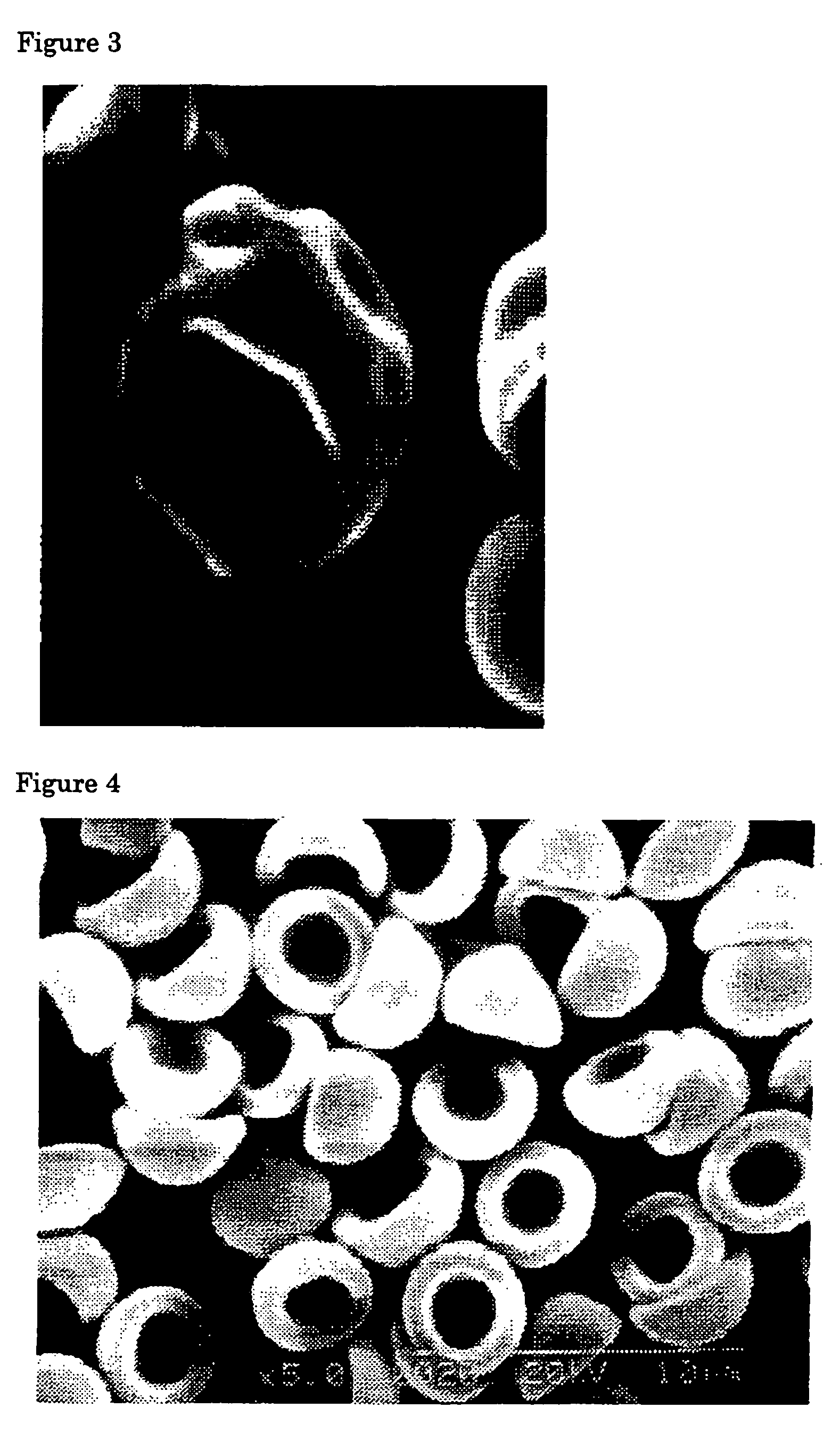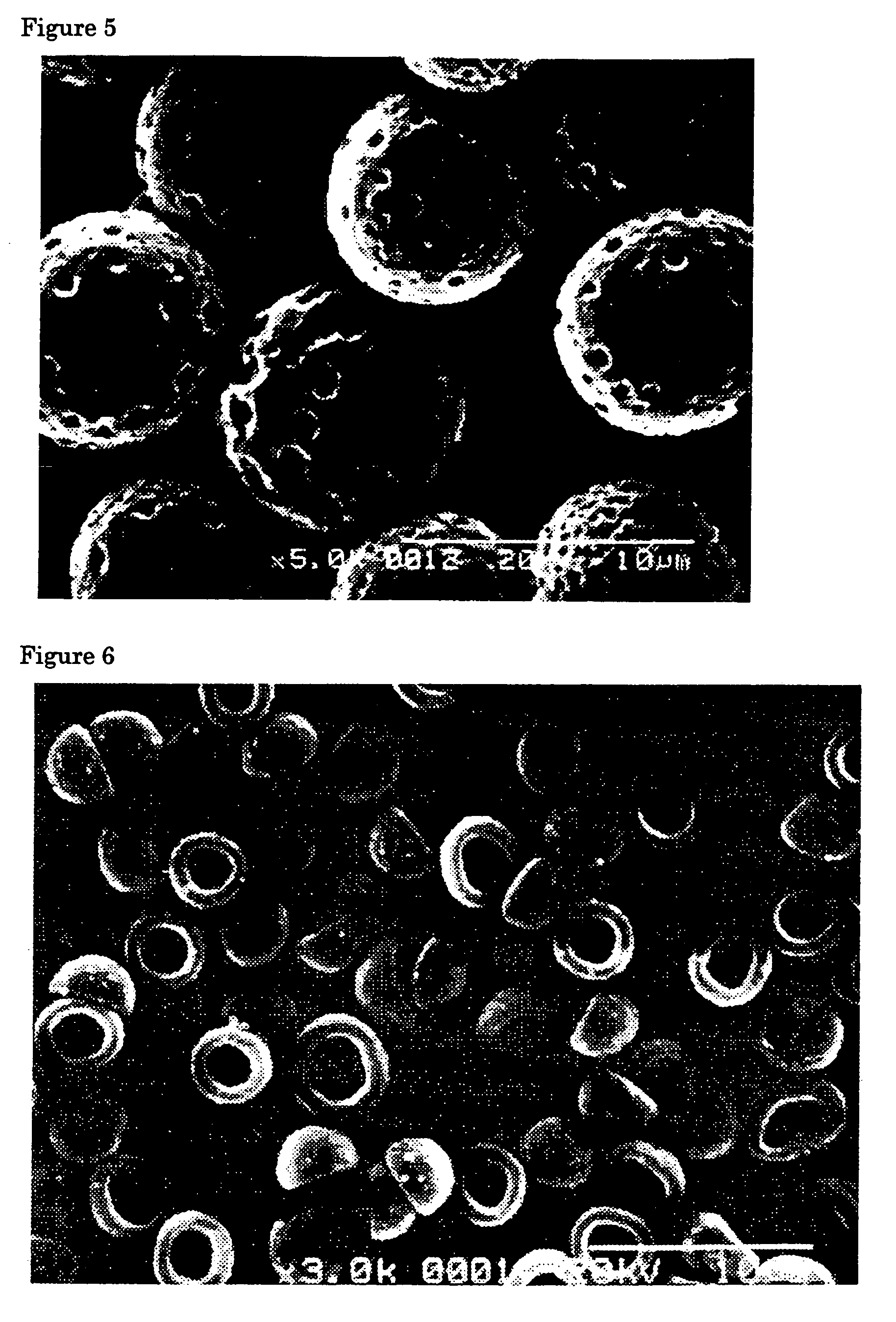Flat particles and process for production thereof
a technology of flat particles and processing methods, applied in the field of flat particles, can solve the problems of long processing time required, cost disadvantage, quality problems,
- Summary
- Abstract
- Description
- Claims
- Application Information
AI Technical Summary
Benefits of technology
Problems solved by technology
Method used
Image
Examples
synthesis example 1
[0186]A mixture of 800 g of 4,4′-dicyclohexylmethane diisocyanate (HMDI) and 4 g of a carbodiimidation catalyst was reacted at 180° C. for 37 hours to produce 4,4′-dicyclohexylmethane carbodiimide with an isocyanate group at the terminal (degree of polymerization: 10.5). Then, 677.3 g of thus obtained carbodiimide was reacted with 297.4 g of polyoxyethylenemonomethyl ether (degree of polymerization m=12) at 140° C. for 6 hours, to which 649.8 g of distilled water was gradually added to produce a pale yellow transparent carbodiimide resin solution (resin concentration: 60% by weight). It contained the carbodiimide at 350 / NCN equivalents.
synthesis example 2
[0187]A mixture of 800 g of 4,4′-dicyclohexylmethane diisocyanate (HMDI) and 4 g of a carbodiimidation catalyst was reacted at 180° C. for 9 hours to produce 4,4′-dicyclohexylmethane carbodiimide with an isocyanate group at the terminal (degree of polymerization: 2.7). Then, 702 g of thus obtained carbodiimide was reacted with 343.3 g of polyoxyethylenemonomethyl ether (degree of polymerization m=4) at 140° C. for 6 hours, to which 696.9 g of distilled water was gradually added to produce a pale yellow transparent carbodiimide resin solution (resin concentration: 60% by weight). It contained the carbodiimide at 469 / NCN equivalents.
synthesis example 3
[0188]A mixture of 800 g of 4,4′-dicyclohexylmethane diisocyanate (HMDI) and 4 g of a carbodiimidation catalyst was reacted at 180° C. for 6 hours to produce 4,4′-dicyclohexylmethane carbodiimide with an isocyanate group at the terminal (degree of polymerization: 1.2). Then, 726.7 g of thus obtained carbodiimide was reacted with 577.4 g of polyoxyethylenemonomethyl ether (degree of polymerization m=4) at 140° C. for 6 hours, to which 869.4 g of distilled water was gradually added to produce a pale yellow transparent carbodiimide resin solution (resin concentration: 60% by weight). It contained the carbodiimide at 783 / NCN equivalents.
PUM
| Property | Measurement | Unit |
|---|---|---|
| particle diameter | aaaaa | aaaaa |
| temperature | aaaaa | aaaaa |
| particle diameter | aaaaa | aaaaa |
Abstract
Description
Claims
Application Information
 Login to View More
Login to View More - R&D
- Intellectual Property
- Life Sciences
- Materials
- Tech Scout
- Unparalleled Data Quality
- Higher Quality Content
- 60% Fewer Hallucinations
Browse by: Latest US Patents, China's latest patents, Technical Efficacy Thesaurus, Application Domain, Technology Topic, Popular Technical Reports.
© 2025 PatSnap. All rights reserved.Legal|Privacy policy|Modern Slavery Act Transparency Statement|Sitemap|About US| Contact US: help@patsnap.com



